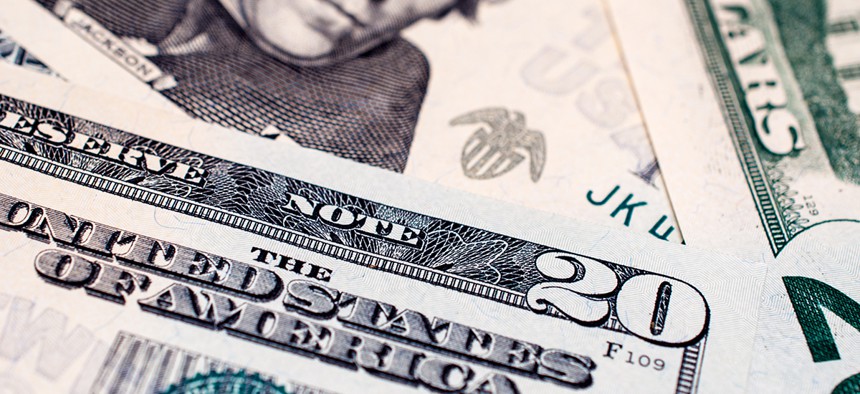Treasury Says It Needs Some New Security Features for Next-Gen Money

Dave Carroll/Shutterstock.com
The anti-counterfeit markers will be visible to the naked eye and detectable by special tools, according to a pre-solicitation notice.
Now's the chance to make your mark on the next series of U.S. dollar bills. The Bureau of Engraving and Printing later this month is expected to start competing a contract for the creation of features -- like special fibers and optical tricks -- to prevent forgery.
The anti-counterfeit markers will be visible to the naked eye and detectable by special tools, according to a pre-solicitation notice.
The plan is to issue a solicitation around July 28 "for the research and development of a new overt and device-assisted security features," the bureau says.
It would be preferable that the protections incorporate "intaglio print" with a raised feel, and "optical waveguide" technology, according to the notice.
The maximum 4-year contract could go to one or multiple companies.
The bureau does not say when the next-gen money will go into circulation.
In April, Treasury Secretary Jack Lew announced new bills with some different historical faces will enter circulation in 2020.
Slave owner Andrew Jackson will be replaced by abolitionist and one-time slave Harriet Tubman on the $20 bill.
The back of a new $5 bill will depict the 1939 performance at the Lincoln Memorial of African-American singer Marian Anderson. She had not been allowed to sing at the nearby, segregated Constitution Hall. Also on that side, there will be pictures of Eleanor Roosevelt, who arranged the special concert and Martin Luther King Jr., who orated his “I Have a Dream” speech on the monument's steps.
The safeguards for "the next generation of United States Federal Reserve Notes" partly are intended to help consumers see the difference between fake and real dollars, according to the notice.
They will offer "a user-friendly feature to quickly and confidently validate notes passed in common, everyday transactions," the bureau says.
There already are some intricate anti-fraud elements embedded into today's dollars.
The $10 bill glows orange under UV light. When held up to a normal light, a portrait of Alexander Hamilton can be seen from both sides of the note. And there's a color-changing number 10 in the lower right-hand corner.
The $20 currency contains fibers that glow green when illuminated by UV light. An image of Jackson is visible on both sides, and a color-shifting number 20 is at the bottom, on the right.






